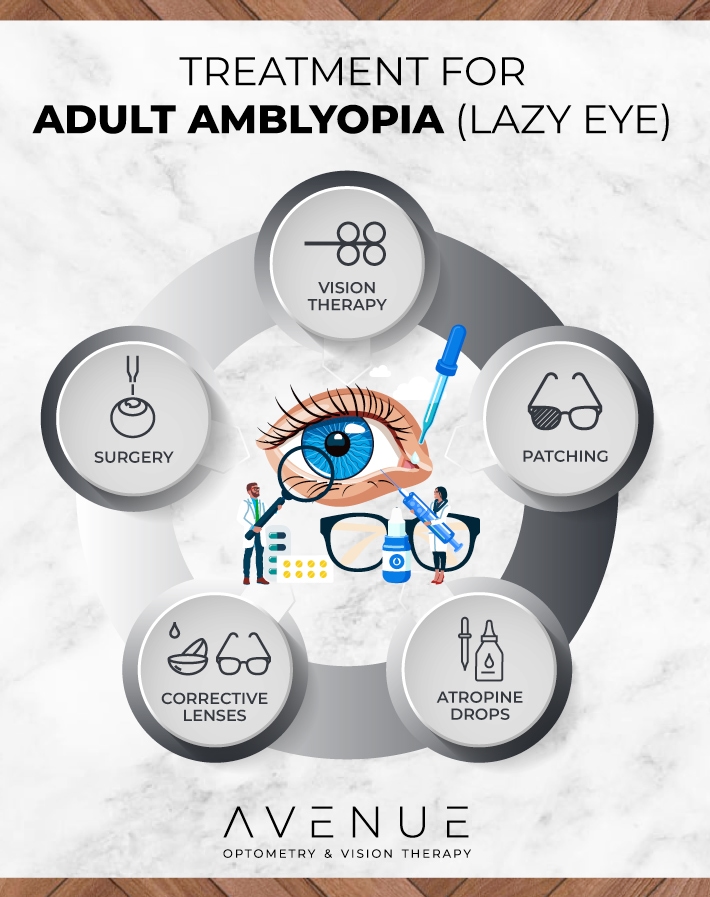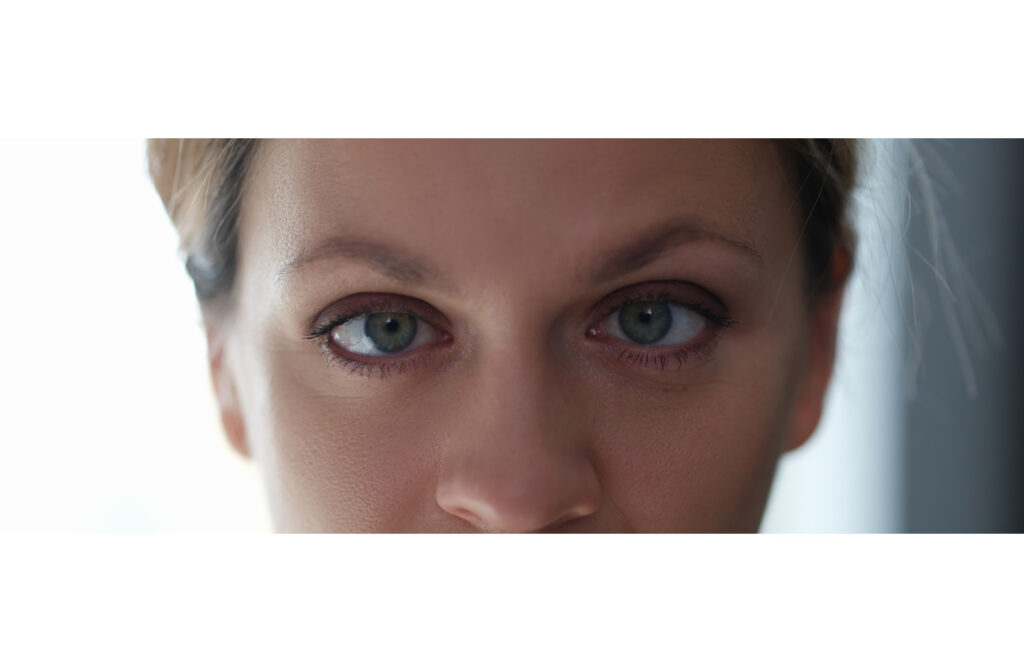Amblyopia, also known as a lazy eye, most commonly begins in childhood. It can be present at birth, or it can develop as a result of a refractive error like nearsightedness, farsightedness, or astigmatism, which can blur the vision in one eye and lead to the brain favouring the other eye.
Amblyopia isn’t just a childhood condition—adults can also experience it. When amblyopia develops in adulthood, it can be due to a history of untreated childhood amblyopia or strabismus, other eye conditions, like cataracts and macular degeneration, eye injuries, or even a stroke.
Whether you have lived with amblyopia all your life or have developed it later in adulthood, understanding its causes is the first step toward managing and treating it with methods like vision therapy.
Understanding Amblyopia & Strabismus
For those with amblyopia, the brain struggles to effectively coordinate both eyes as a team. It can actively ignore or suppress the information coming from one eye, leading to reduced visual acuity and potential issues with depth perception, eye movements during reading, and visual decision-making while driving.
People often confuse amblyopia with strabismus, also known as crossed eyes. Strabismus is a misalignment of the eyes. With this condition, the eyes don’t point in the same direction simultaneously. One eye may turn inward, outward, upward, or downward while the other eye maintains its correct alignment.
Causes of Amblyopia in Adults
Adult amblyopia can occur as a result of untreated strabismus. When the eyes are misaligned due to strabismus, the brain may suppress the input from the misaligned eye to avoid double vision. This suppression can lead to amblyopia in that particular eye.
Conditions such as cataracts, glaucoma, or a stroke can also contribute to the development of amblyopia in adulthood. These conditions can interfere with the normal functioning of the visual system, affecting the coordination between the brain and the affected eye.
Eye trauma is another possible trigger for adult amblyopia. When you experience an eye injury, your visual pathways may be disrupted. Injuries can also impede the proper development of vision.
Diagnosing Amblyopia
To check for amblyopia, we can conduct a test called the cover test. This involves covering one eye and observing how your other eye moves and focuses. We will carefully look for any signs of misalignment or wandering of the eyes, which could indicate amblyopia.
We might also perform a refractive error test to determine if there are any significant differences in the prescription between both of your eyes, as well as retinal exams or imaging tests.
Does a Lazy Eye Worsen with Age?
A lazy eye can get worse over time, but once a person reaches adulthood, the visual system has largely matured, and the effects of amblyopia tend to stabilize.
However, the underlying cause of amblyopia can still impact your vision as you age. For instance, if you have a condition like macular degeneration or cataracts, it may affect your overall vision, including the eye affected by amblyopia.
Keeping up with regular eye exams is an essential practice to preserve your vision and eye health.

Can You Fix a Lazy Eye in Adulthood?
While treating amblyopia during childhood is often more effective, adults can still benefit from interventions to improve their vision.
Vision Therapy
One common approach for treating amblyopia is vision therapy. This treatment involves a series of exercises and activities designed to improve communication between the brain and the affected eye. By stimulating the underactive eye and training it to work together with the stronger eye, vision therapy can help improve visual acuity and reduce the dominance of the stronger eye.
Patching or Eye Drops
In some cases, eye care professionals may recommend patching or eye drops to treat amblyopia. These methods involve occluding or blurring the vision in the stronger eye, which encourages the lazy eye to work harder and develop better vision over time. The duration and frequency of patching or eye drop treatment can vary depending on individual circumstances.
Corrective Lenses
Amblyopia can sometimes be associated with refractive errors or differences in prescription between each eye. Wearing corrective lenses, such as glasses or contact lenses, can help optimize vision in both eyes and potentially improve the condition.
An eye care professional can determine the appropriate prescription for your eyes and discuss the best options for correcting refractive errors that affect your vision.
Surgical Intervention
While there is no surgery available to fix amblyopia, surgical intervention may be considered as a treatment option for an underlying condition. This typically involves procedures like strabismus surgery or cataract removal, depending on the underlying cause of amblyopia. In these cases, surgery may help correct misalignments of the eyes or address other structural issues that contribute to the condition.
Get Treatment for Adult Amblyopia
If you suspect you may be dealing with amblyopia or are due for a checkup, visit us for an eye exam. Regardless of when amblyopia develops in adulthood, regular checkups with your eye doctor can play a significant role in protecting your eye health.
At Avenue Optometry & Vision Therapy, we’re here to help. Whether you’re interested in exploring vision therapy or simply need to schedule a checkup, our team is ready to meet your needs for comprehensive eye care. Book an appointment online today.




